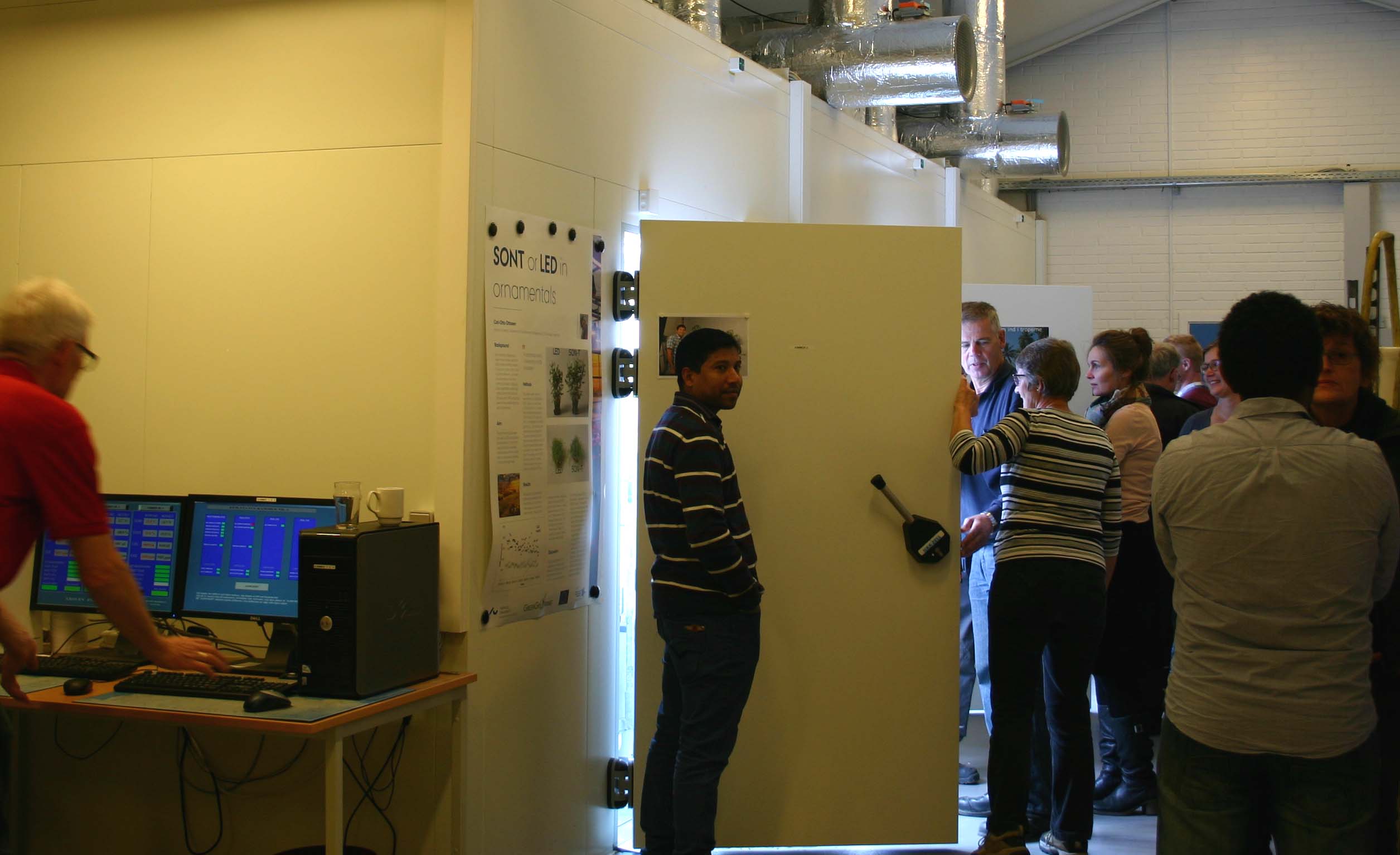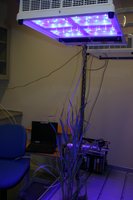Climate phoenix rises from the ashes
Just like the mythological phoenix rose from the ashes, the climate chambers at AU Aarslev, which were destroyed by fire last summer, have now been reborn and are fit for fight. The start-up of the new facilities was commemorated by a celebration on 11 October 2013.

Scientists from other universities looked longingly and admiringly at the new state-of-the-art climate chambers at the opening festivities at AU Aarslev on 11 October 2013. The new climate chambers enable scientists at AU Aarslev to perform experiments with plants in numerous combinations of climatic conditions.
- Our new facilities are among the best in Northern Europe and can undoubtedly help attract graduate students and collaborators. We can make experiments where climate and light conditions are totally identical and we can make experiments all year round, says an enthusiastic associate professor Carl-Otto Ottosen from the Department of Food Science at AU Aarslev.
The temperature of the three new climate chambers can be adjusted from 5-40°C. Humidity and intensity and type of light can likewise be adjusted so that the environment in the individual chambers can be tailored and managed to exacting individual needs.
The explanation why the research centre in Aarslev has new climate chambers is that a fire destroyed some of the research facilities in June last year. Some of the equipment was destroyed and the rest was damaged by soot and water, while laboratories were blackened with soot everywhere.
In addition to the three new climate chambers, three of the other climate chambers have been through a professional cleaning. The climate chambers and photosynthesis laboratory have been rebuilt from floor to ceiling. The whole shebang cost five million Danish crowns, but then Aarhus University now has topnotch facilities for research in plant responses to the dynamic use of temperature and light with advanced photosynthesis measurements.




Blue light gives more compact plant growth and the plants produce more defence compounds in their leaves. Red light promotes the formation of flowers. In the new facilities, scientists can combine a number of different colours of LED lights to fit the experimental purpose. Photos: Janne Hansen
The new facilities allow scientists to improve humidity control in order to reduce energy consumption, develop new lighting systems that take into account energy prices, and research the use of LED lights in all colours for the development of dynamic lighting strategies in commercial greenhouses or to understand plant responses to spectra.

Heat-tolerant tomato plants from China grown in one of the new climate chambers as part of a PhD project. Photo: Janne Hansen
See TV feature from the opening (in Danish) here.
Read the article about the fire in June 2012 here.
More information: Associate Professor Carl-Otto Ottosen, Department of Food Science, e-mail: co.ottosen@agrsci.dk, telephone: +45 8715 8373, mobile: +45 2290 3105
